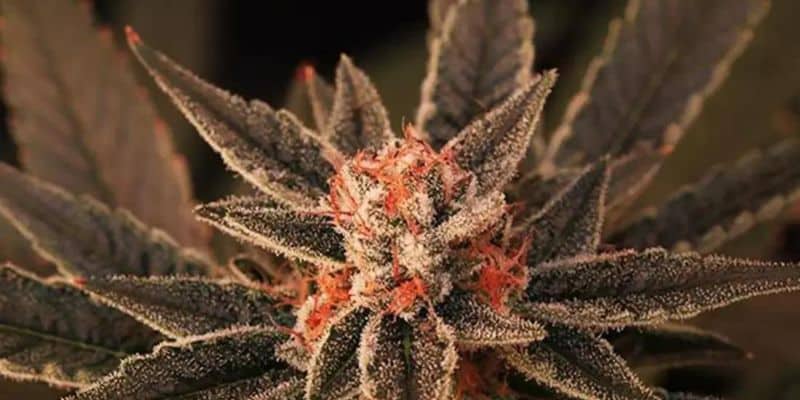Striding through the hallowed grow rooms of indoor cannabis sanctuaries, one cannot help but be mesmerized by the curtain of lush greenery, punctuated by eye-catching, bulbous marijuana buds. For years, size has been directly related to potency. But, are big buds more potent? This question has resonated across canna-curious and seasoned users alike, as a common belief like this deserves a closer look under the microscope.
In this article:
- We explore the common myth that larger cannabis equates to increased potency, examining the factors that actually determine a bud’s strength.
- Detailed insights are provided on how cultivation methods, genetic makeup, and environmental conditions play a pivotal role in influencing the THC content and overall quality produced.
- The article dispels misconceptions, emphasizing that potency is not determined by the bud’s size but rather by its chemical composition and the care taken during its growth cycle.
Myth or Reality: Are Big Buds Truly More Potent?
The nonchalant consensus among a sizeable portion of the community is that the bigger the bud, the higher the potency. This belief has become so ingrained in the marijuana culture that it’s rarely challenged. But before we accept this statement as gospel truth, it’s paramount to understand the science behind potency and how bud size comes into play.
Understanding Potency
Potency, at its core, is a measure of effectiveness. In the context of cannabis, potency is typically associated with the percentage of cannabinoids—primarily THC (delta-9-tetrahydrocannabinol)—present in the plant material. Cannabinoids are chemical compounds found in the plant that interact with the endocannabinoid system of the human body, responsible for the array of psychotropic and therapeutic effects of marijuana use.
The significance of genetics. The genetics play a monumental role in determining its potency. Plant breeders have been meticulously crossbreeding strains to achieve specific levels and ratios of cannabinoids to elicit desired effects. Consequently, certain strains are known for their high potency, regardless of their size.
More Bud, More THC?
The oft-uttered notion that increased bud size equates to greater potency is overly simplistic. While it’s true that larger buds can contain higher amounts of THC, several variables influence potency, and each plant’s situation is unique.
The Role of Trichomes
Size isn’t everything—trichomes are. The true harbinger of potency are the tiny, crystal-like structures on flowers known as trichomes. These house the highest concentrations of cannabinoids, particularly THC. Therefore, a smaller bud with a dense covering of trichomes can be significantly more potent than a larger, less trichome-rich bud.
Environmental Impact
Cultivation conditions matter. The environment in which it is grown has a direct influence on its eventual potency. Factors such as light intensity, temperature, humidity levels, and the nutrient solution can all impact cannabinoid production. A well-tended, small bud grown in an optimal environment can rival the potency of a larger but neglected bud.
Harvest Timing
Timing is everything. The stage at which plants are harvested profoundly affects cannabinoid levels. Waiting too long can result in a decrease in THC content as the trichomes begin to degrade. Harvest too early, and the plant might not have developed enough to produce peak levels of cannabinoids. Timing the harvest accurately is both an art and a science that every grower must master.
The Flawed Logic of Size-Based Potency
It would be remiss to assert that big is definitively less potent, but the reverse is also not always true. The connection between size and potency is more anecdotal than scientific. Each plant, depending on its genetics and nurturing, will yield a different potency, regardless of the size of its primary bud.
Factors That Truly Impact Potency
To obtain a comprehensive understanding of what makes a high-potency weed bud on plant, one must look beyond superficial attributes and investigate the intricate variables influencing potency output in cannabis.
Genetics and Strain Development
Foundation for potency. Cultivators who aim to produce high-THC plants start with the right genetic foundation. Strains that have been bred for potency exhibit consistent cannabinoid profiles and can reliably produce high-quality, high-potency buds.
Cultivation Techniques
The final push. Various cultivation methods can help or hinder potency. Training techniques like topping and low-stress training can encourage the growth of top colas, which often boast higher potency than smaller, lower buds. Similarly, advanced growing techniques such as hydroponics or the sea of green method can optimize growing conditions, leading to more potent outcomes.
Nutrient Management
Nourishing potency. A well-balanced nutritional regimen can ensure that plants have all the building blocks they need to produce cannabinoids. This isn’t to say that over-fertilization necessarily leads to potency spikes; rather, the correct amount and balance are key.
Light and Environmental Control
Lighting up the potency. The right spectrum and intensity of light can directly correlate with the production of cannabinoids during flowering. A close simulation of outdoor conditions, with the gradual extension of nighttime hours (the flowering stage), is often considered ideal for cannabinoid production.
Stress and Cannabinoids
The stress response. Stressing the plant by manipulating its environment or through training can trigger a protective response that leads to the production of higher cannabinoid levels. However, this may not always be desirable, as not all stressors result in increased THC content.
Dissecting the Process: Why Are Some Buds More Potent Than Others?
To uncover why some pack a heavier punch than others, we need to follow the lifecycle of a plant, understanding the critical points at which potency is shaped.
The Vegetative Stage
During this phase, plants focus on building a robust structure and root system. Potency is not a priority, and the plant channels its energy into leaf and stem growth, not the production of cannabinoids. Therefore, a bud that has had ample time and resources to grow during this phase may have the potential for higher potency.
Transition to Flowering
This stage is a turning point. Once the light cycle is adjusted to induce flowering, the plant shifts its focus to bud production. The early weeks of flowering are crucial for the establishment of sites where potent bud can develop, notably dense branches with many potential flowering sites.
Later Flowering Stages
Trichome production surges during these stages, as the plant gears up for reproduction (the trichomes themselves are believed to serve as a defense mechanism against herbivores). This is the peak time for THC and cannabinoid synthesis, and trichomes begin to appear on the calyxes—the ultimately valuable part of the bud.
The Harvest Window
Timing the harvest is a balancing act. Too early, and they won’t have reached their full potentiation, but too late, and the trichomes will start to degrade. Waiting for the majority of trichomes to transition from clear to cloudy/amber can indicate the optimal time for harvesting a potent plant.
How to Judge Potency Without Trusting Bud Size
Visual Inspection
Look beyond size. While larger buds can potentially signal higher potency, scrutinizing the color of the trichomes (ideally a milky-white color) against the color can give a more accurate picture. Additionally, examining the density and presentation of the bud structure can hint towards cannabinoid concentrations.
Aroma and Terpenes
Savor the scents. Terpenes, the aromatic compounds, not only contribute to the taste and smell of a strain but can also modify and enhance its effects in conjunction with cannabinoids. A pungent, complex aroma is generally found in more potent varieties.
The Touch Test
Feel for the stickiness. Stickier buds are usually richer in trichomes, which translates to heightened potency. On the other hand, those that crumble easily may not be as potent, but they could still provide a valuable smoking experience.
Experiential Judgment
Don’t discount the high. Finally, consuming a small sample of the product can provide insight into its potency. The intensity and duration of the high, as well as the accompanying effects, can give a clear indication of the strength of the strain.
The Verdict: Buds Are More Than Mere Metrics
Bud size can indeed be a point of pride for growers and a visual delight for users. However, in the pursuit of high quality and potency, it’s crucial to remember that size isn’t everything. The key to robust THC levels and a rich terpene profile lies in the genetics, care, and environment of the plant—factors that merit more attention than mere metrics.
In conclusion, the quest for potency is a multifaceted one, where size plays a role but is far from the only one. True potency collectors understand that a large bud isn’t always the most potent and that the real measure of strength in a strain reveals itself through the nuances of the growing and harvesting process.



